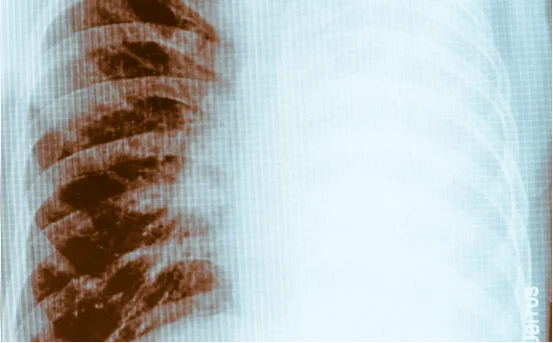Lung Volume Reduction Surgery (LVRS) is an option for surgical treatment that is primarily employed to treat the severe form of emphysema that is a symptom associated with Chronic Obstructive Pulmonary Disorder (COPD). This procedure is a revolutionary way to remove affected lungs and allows the healthy parts to function better. Through reducing hyperinflation in the lungs, LVRS helps improve breathing and oxygen intake as well as general health for those suffering from severe lung illness. Understanding of types of lung volume reduction surgery
As medical technology advances and advances, various varieties in lung volume reduction surgeries have been created to meet various needs of patients and medical ailments.
Why is Lung Volume Reduction Surgery Done?
Patients suffering from severe emphysema typically suffer from over-inflated, damaged lungs that trap air making it difficult to breathe. LVRS seeks to:
- Enhance lung function by eliminating areas that are not functioning or over-inflated.
- Improve breathing mechanics
- Reduce breath shortness
- Improve exercise capacity
- Improve life expectancy for selected patients
LVRS is usually suggested for patients when medication, pulmonary rehabilitation and oxygen therapy fail to offer enough relief.
Types of Lung Volume Reduction Surgery
There are two main categories of LVRS the Surgical Lung volume Reduced as well as Bronchoscopic Lung Volume Reduction. Here is a thorough description of each category and their subtypes:
Surgical Lung Volume Reduction Surgery (LVRS)
This is the standard type of procedure in which portions of the lung are surgically removed. The procedure is usually performed using two methods:
Median Sternotomy (Open Chest Surgery)
- Technique: Surgeon creates an incision on the sternum (breastbone) to gain access to both lungs.
- Benefits: Gives the surgeon clear vision and access to both lung.
- Drawbacks: Longer time to recover more chance of complications, and more post-operative discomfort.
The best option is for patients who require bilateral lung resection who have good health overall and surgical tolerability.
VATS: Video-Assisted Thoracoscopic Surgery (VATS)
- Procedure: Technique that is minimally invasive that involves small incisions as well as the Thoracoscope (a tiny camera).
- Benefits: Less discomfort, quicker recovery, lower risk for infection and less scars.
- Drawbacks: Lower access and visibility as in comparison to open surgery.
The best option is for patients with emphysema that is localized and has enough lung function to be able to undergo surgery.
Bronchoscopic Lung Volume Reduction (BLVR)
It’s a non-surgical method that doesn’t require lung resection or incisions. The procedure is carried out using the bronchoscope that is inserted through the nose or mouth into the lung.
There are many ways to use BLVR:
Endobronchial Valves (EBVs)
- Procedure: The tiny one-way valves are placed inside the airways to stop the flow of air to lung areas that are infected.
- Benefits: Very minimally invasive as well as reversible. It is also outpatient-based.
- Drawbacks not suitable for all patients, and carries the risk of pneumothorax.
- Perfect for patients who have emphysema that is heterogeneous but no other ventilation.
Coil Implants
- Procedure: A small number of nitinol coils can be introduced into airways to make the lung tissue more compact and to restore the elasticity.
- Advantages: Lowers the risk of hyperinflation and enhances endurance during exercise.
- Drawbacks: Reversible, possibility of coughing, and irritation to the airways.
The ideal candidate for this treatment is a patient who suffer from heterogeneous or homogeneous Emphysema.
Thermal Vapor Ablation (Steam Therapy)
- Method: Water vapor that is heated is used to reduce inflammation and shrink lung tissue that is damaged.
- Benefits: The treatment targets specific lung regions without the use of mechanical devices.
- Drawbacks: Causes short-term swelling; less readily accessible.
The ideal patient is one with a heterogeneous upper lobe Emphysema.
Biological Lung Volume Reduction (Bio-LVRS)
- Procedure: Specially bio-based adhesives or foams break down and reshape damaged lung regions.
- Benefits: It is customizable with less effort.
- Drawbacks: Still under investigation and not widely accessible.
Perfect for patients looking for more non-invasive alternatives to surgery LVRS.
Who is a Candidate for Lung Volume Reduction Surgery?
LVRS isn’t suitable for all COPD patient. Candidates are carefully chosen according to:
- The form and where emphysema is located (heterogeneous or homogeneous)
- Tests of the function of the lungs
- Practice tolerance
- Health overall and co-morbidities
- The status of smoking (must be smoke-free)
A thorough evaluation by a pulmonologist or the thoracic surgeon is vital in determining eligibility.
Benefits of Lung Volume Reduction Surgery
- Significant improvement in the capacity to breathe
- Better oxygen exchange
- Improved endurance and mobility
- Life quality improved
- The potential for a decrease in hospitalizations resulting from respiratory failure
Risks and Complications
Like all major procedures LVRS has risks:
- Pneumothorax (lung collapse)
- Infection or pneumonia
- Leaks of air that are prolonged
- Bleeding
- The need for a mechanical ventilator after surgery
- Re-admission or other procedures
But with careful selection of the patient and skilled surgical teams, the risk are reduced.
Recovery and Postoperative Care
- Hospitalization typically 7-10 days for LVRS surgery and smaller for BLVR.
- Rehabilitation: The rehabilitation of the lungs is vital both prior to and after surgery.
- Medicines: This includes bronchodilators, corticosteroids, as well as antibiotics when required.
- Lifestyle Changes: Stopping smoking, remaining active, and ensuring regular monitoring are crucial for the long-term health advantages.
Conclusion
Lung Volume Reduction Surgery offers hope and better lung function for patients suffering from severe Emphysema. With many different bronchoscopic and surgical treatments available, the treatment can be tailored to each patient’s individual needs and emphysema types.
Talking to your pulmonologist or the team of thoracic surgery can assist you in determining the most effective method. If it’s minimally-invasive bronchoscopic techniques or conventional surgery, LVRS continues to evolve–giving patients the chance to enjoy better living conditions.























